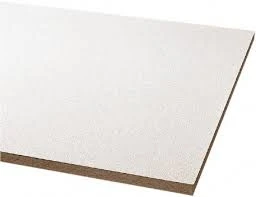9 月 . 19, 2024 19:44 Back to list
what is ceiling grid made of
Understanding Ceiling Grids What Are They Made Of?
Ceiling grids are a fundamental component in the construction and design of modern interior spaces. They play a critical role in both aesthetics and functionality, serving as frameworks that support ceiling tiles, acoustic panels, and lighting fixtures. But what exactly are these grids made of? Let's delve into the materials typically used in ceiling grid systems and their respective benefits.
Metal Grid Systems
One of the most common materials used for ceiling grids is metal, particularly galvanized steel or aluminum. Steel is favored for its strength and durability, while aluminum is selected for its lightweight properties and resistance to corrosion. Metal grid systems are often used in commercial spaces due to their ability to support heavier ceiling tiles and fixtures, making them ideal for offices, retail stores, and other public areas.
The metal components of a grid system typically include main runners, cross tees, and wall angles. The main runners are the primary supports that run parallel to the longest side of the room, while the cross tees create the grid layout by intersecting the main runners at regular intervals. This metal structure is designed to create a modular ceiling that can easily accommodate various tiles and components, allowing for flexibility in design and functionality.
Mineral Fiber and Acoustic Tiles
Another significant aspect of ceiling grids is the ceiling tiles themselves, which are often made from mineral fiber. These tiles are specifically designed to offer sound absorption and thermal properties, making them excellent choices for spaces that require acoustic control, such as conference rooms and auditoriums. The mineral fiber composition helps reduce noise levels, enhancing the overall acoustic quality of a room.
what is ceiling grid made of

In addition to mineral fiber, ceiling tiles can also be made from fiberglass, which offers similar sound absorption benefits and is resistant to moisture. This makes fiberglass tiles particularly useful in environments prone to humidity, such as kitchens and bathrooms.
Other Material Options
While metal and mineral fiber dominate the market, ceiling grids can also be constructed from other materials based on design requirements and aesthetic preferences. For instance, some designers opt for wood grids to achieve a more natural and warm appearance. Wood can beautifully complement modern and rustic interior designs, though it may require additional maintenance compared to metal or mineral options.
Plastic ceiling grids and tiles are another alternative, often chosen for their lightweight nature and versatility. They can be easily installed and are less prone to corrosion, making them suitable for environments that might be subjected to moisture.
Conclusion
In summary, ceiling grids are made from a variety of materials, including metal, mineral fiber, fiberglass, wood, and plastic. Each material brings its own set of advantages, allowing designers and builders to customize ceiling systems according to functional needs and aesthetic goals. Understanding the composition of these ceiling grids is essential for making informed decisions in architectural design, ensuring that both compatibility with other building materials and the overall acoustic performance of the space are optimized. Whether for commercial or residential use, the right choice of ceiling grid can significantly enhance the look and feel of any interior environment.
-
Revolutionizing Interior Design with Ceilings t grid Suspended SystemNewsOct.29,2024
-
Revolutionizing Ceiling Design with ceiling access panel with Gypsum Tile WaterproofNewsOct.29,2024
-
Revolutionizing Interior Design with PVC Gypsum Ceiling: A Comprehensive GuideNewsOct.29,2024
-
Elevating Interior Design with High quality Mineral Fiber Ceiling TilesNewsOct.29,2024
-
Revolutionizing Interior Design with PVC Gypsum Ceiling: A Comprehensive GuideNewsOct.29,2024
-
Elevating Interior Design with High-Quality Mineral Fiber Ceiling Tiles: A Comprehensive GuideNewsOct.29,2024







